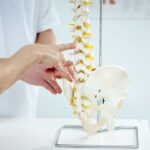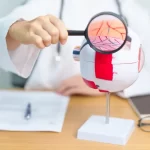
Handling active breakouts is annoying, but dealing with the scars they usually leave behind could often be more terrible. Acne scars are small scars that linger on the skin due to an acne breakout. Acne happens when the pores get clogged with oil, dead skin cells, and bacteria to create deep nodules and inflamed pimples.
Huge pimples could rupture themselves when you pop or pick them. When they rupture, the skin utilizes its natural response to mend the affected skin area. At times, the healing does not lead to even, and smooth skin and tiny acne scars pop up after acne. Before we discuss the best acne scar treatment available, let’s first go through the different types of acne scars:
Types of Acne Scars
Acne scars have two major categories: depressed and raised. Under those categories are other different scar types.
Depressed Scars
Shallow and flat, depressed scars — also known as atrophic acne scars — look like a slight indentation in the skin. They’re formed in this manner because your acne blemishes regenerate underneath your skin surface, and the skin couldn’t heal that much tissue to smoothen the layer at the top. Under this category are three types of acne scars.
Boxcar scars: These seem like a box-shaped, broad depression in the skin. They could provide the skin with a pitted look, and they often form in the thicker skin areas, like the jawline.
Icepick scars: These scars stretch deep in the skin; they form as a cone where the point is facing toward the inside.
Rolling scars: Rolling scars give the skin a wave-like look or a mainly uneven tone. They are not as deep as an ice pick or boxcar scars, and they’re not as sharply defined.
Raised Scars
Raised scars are different from depressed scars: They’re created when the skin generates excessive tissue due to acne breakouts. They look like raised bumps on the skin, usually relatively firm.
Hypertrophic scars: They often have the exact size as the acne spots that resulted in them, and most normally, they originate from acne on your back or other skin regions apart from the face, although they could be created anywhere.
Keloid scars are a much more serious form of hypertrophic scars that grow bigger than the imperfections that created them. They might have “shoots” or “arms” that expand from the scar’s root.
Hyperpigmentation
Although hyperpigmentation, also known as over-coloration, isn’t an acne scar, it may be just as aggravating. People with darker complexions are more likely to develop dark brown patches, whereas those with paler complexions are more likely to develop red hyperpigmentation. Hyperpigmentation usually fades away with time and proper treatment.
Rejuran S for Acne Scars
Rejuran S is the most recent acne scar treatment breakthrough. Rejuran S is a polynucleotide-based product that aids in collagen remodeling and skin healing.
What is Rejuran S?
Most cosmetic clinics provide Rejuran S, a more concentrated form of the infamous Korean Salmon DNA-derived Rejuran Healer. The Rejuran S contains restorative and regenerating characteristics to aid with acne scars. Rejuran S stimulates collagen and fibroblast formation, which improves skin cell development and repair. Rejuran S is made up of polynucleotide chains that help to heal destroyed skin cells and stimulate collagen production.
Rejuran S is more concentrated than Rejuran Healer and is designed to heal and minimize the appearance of acne scarring.
How Does It Work?
Inflammation causes acne scars, leading to scar tissue production beneath the skin. Scar tissue comprises collagen fibers that are not formed well due to irregular acne healing. This formation of scar tissue drags or tethers the skin inwards, resulting in pitted scars.
The scars are treated from deep into the skin using these two processes, which include minimizing the appearance of the scars and rectifying the source of the scars (Rejuran S). When Rejuran S is used in conjunction with fractional laser treatment, the results are improved even more since the small wounds generated by the laser/procedure recover quicker with Rejuran S, and the laser/ablative procedure’s ability smoothes and softens the look of the scars on your superficial dermis.







